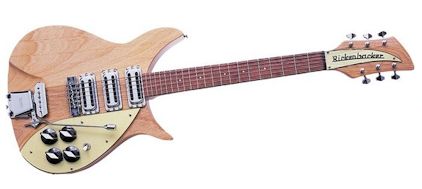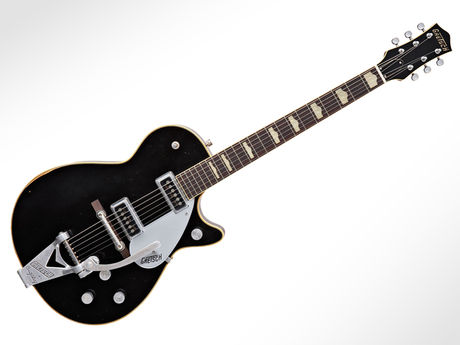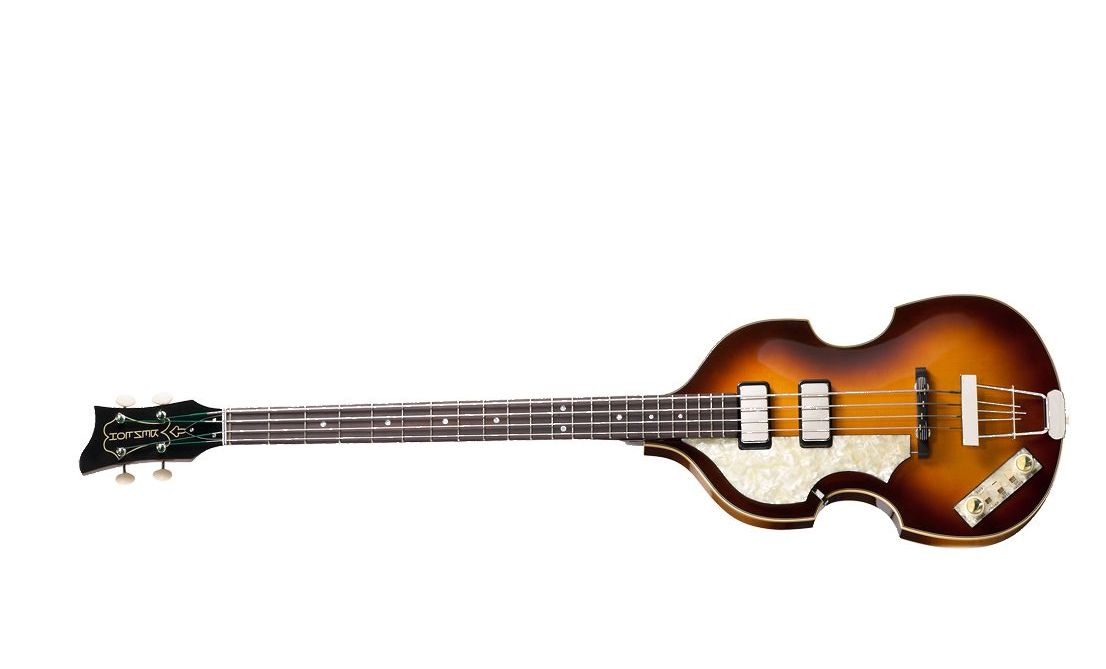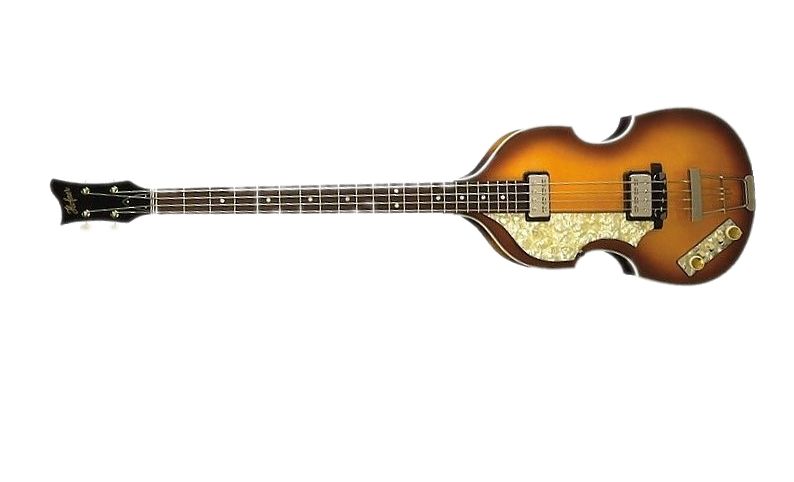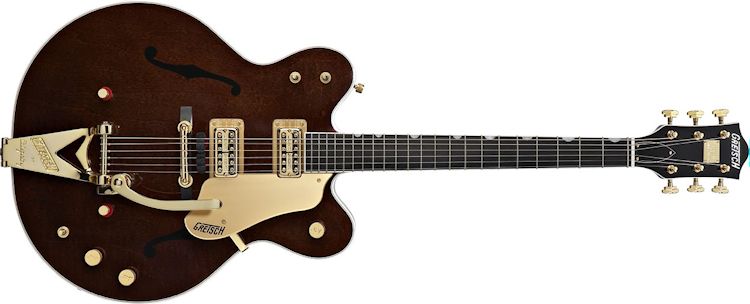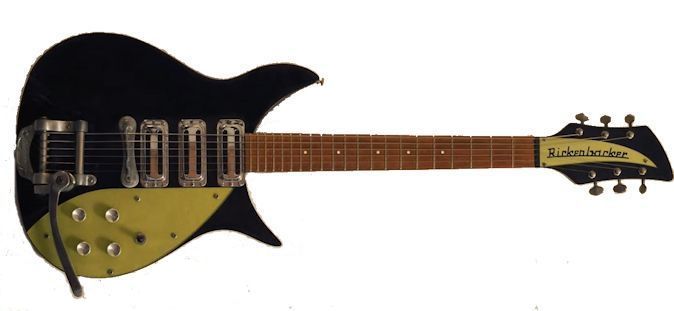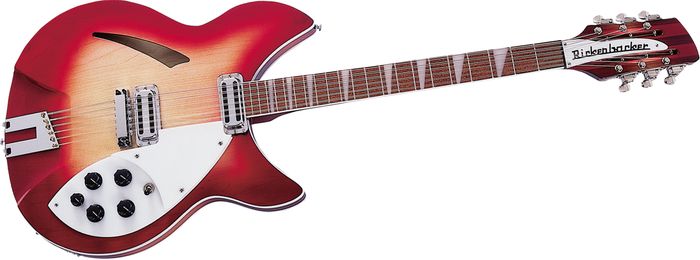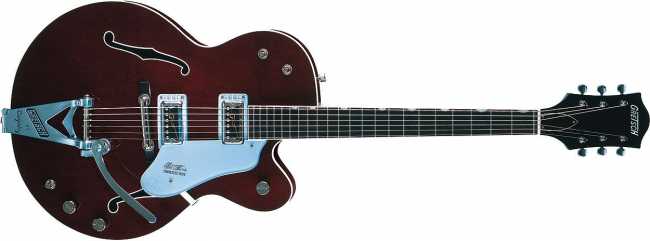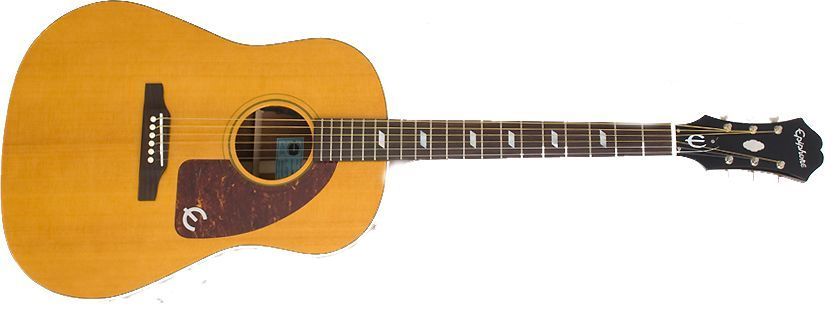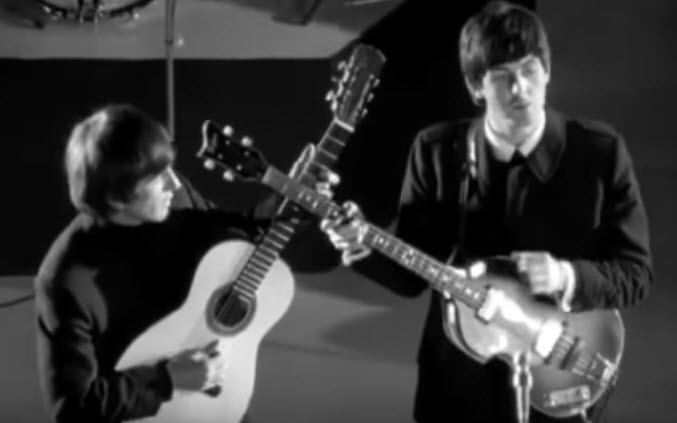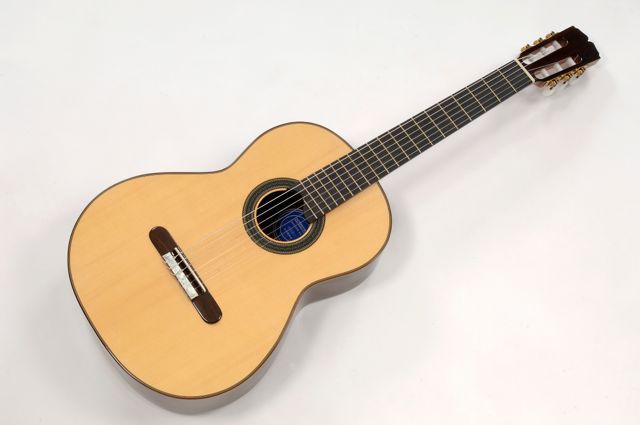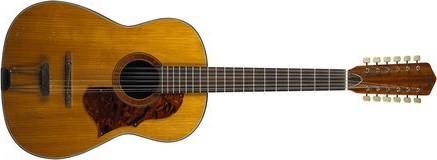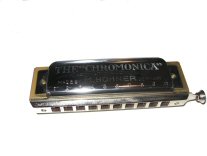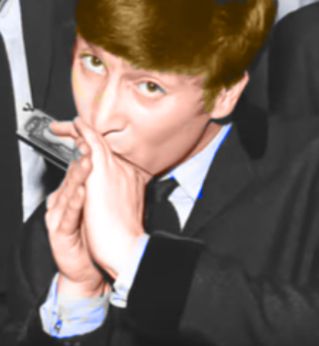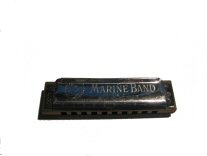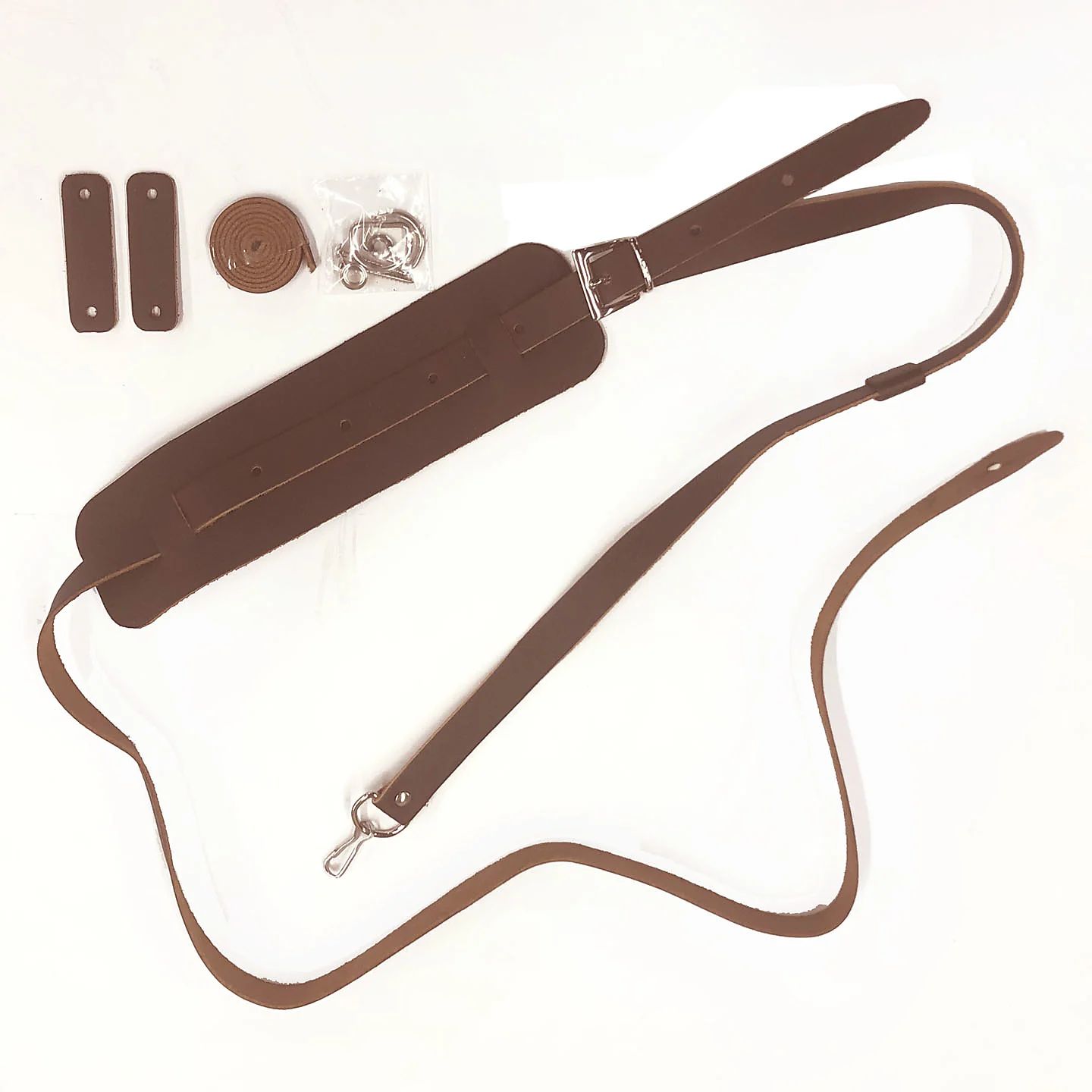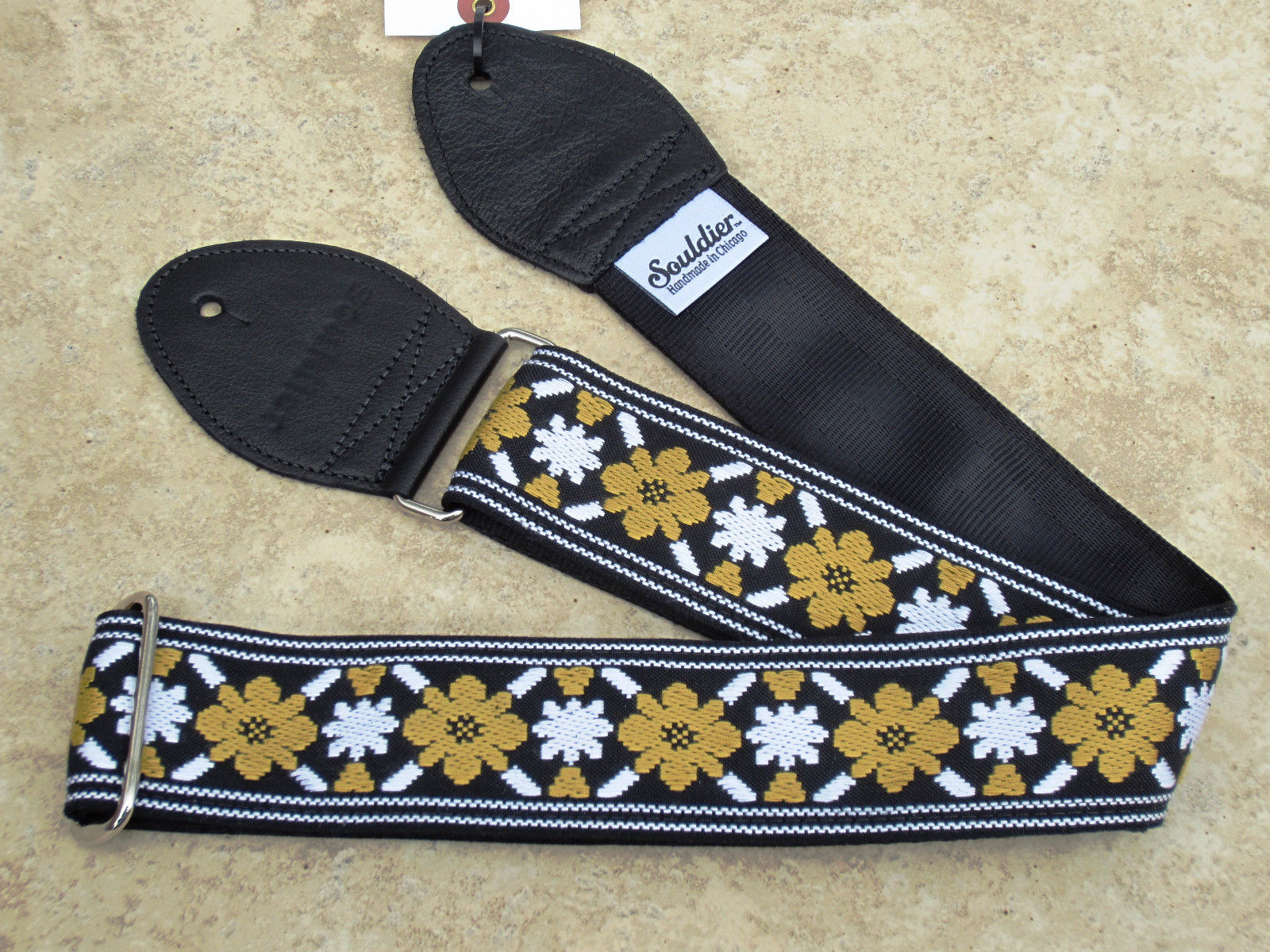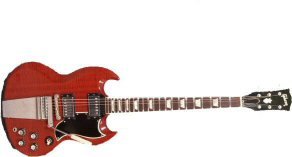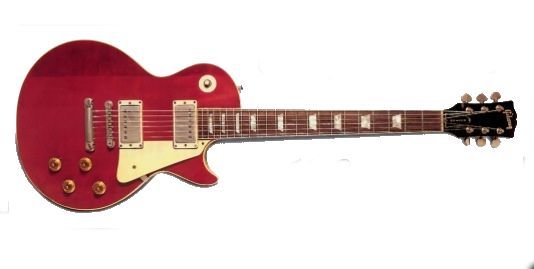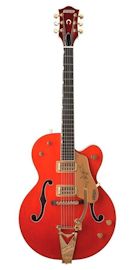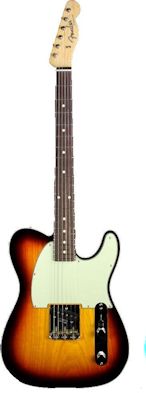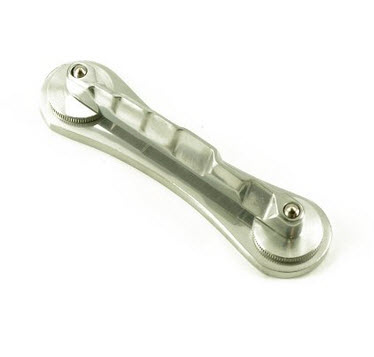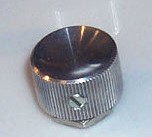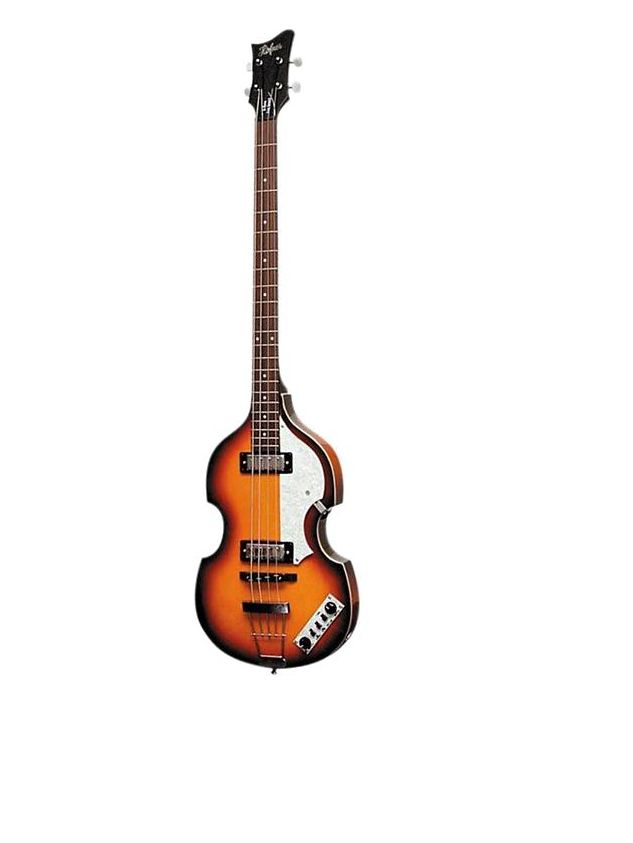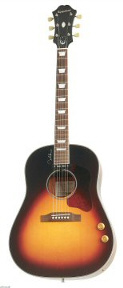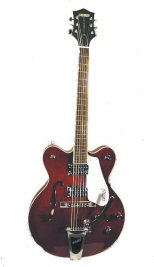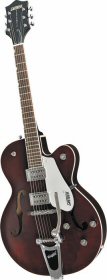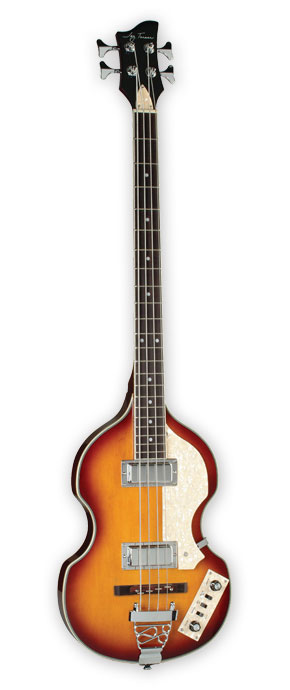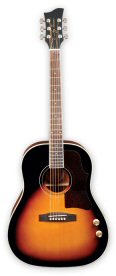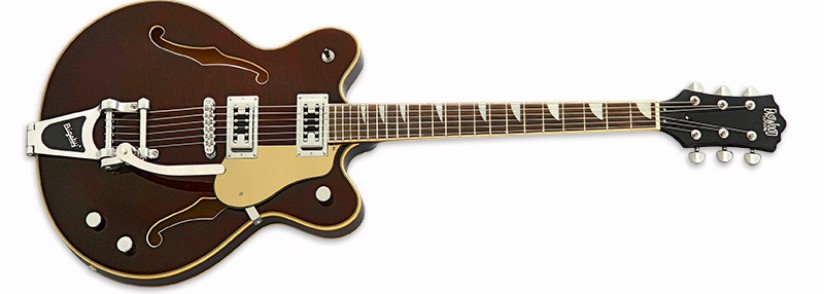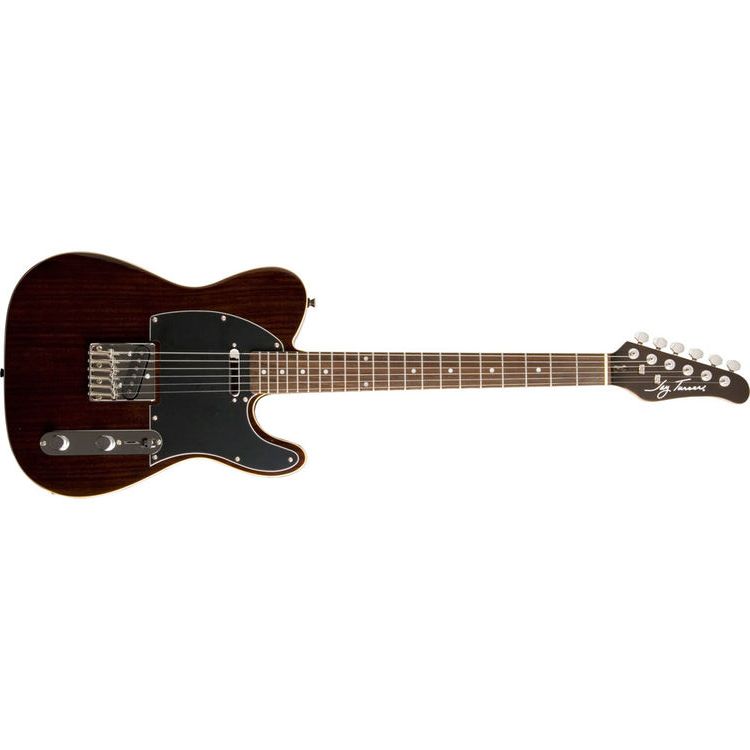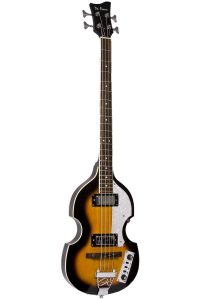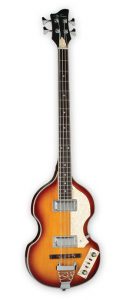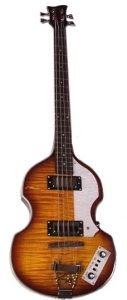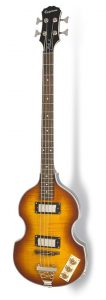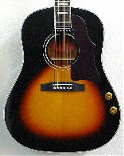Beatles Fab Gear
Beatles Fab Gear presents a history of the instruments used by the Beatles during their career. Here are the guitars and amps that they used professionally. If you want to know more, I urge you to buy a book by Andy Babiuk titled Beatles gear currently in its 3rd edition.
In early Cavern days, the boys used these instruments. John had his Rickenbacker 325, Paul an earlier version of the Hofner 500-1, and George his Gretsch Duo-Jet. For some strange reason, both pickups on the Hofner were towards the neck.
Paul’s Hofner 500-1 has finally been found. It was stolen from a Wing’s van back in ’72.
Here’s the details from a Guitar World article
The Amps were Vox AC-15 twin and later AC-30 twin. Both amps are relatively the same size.
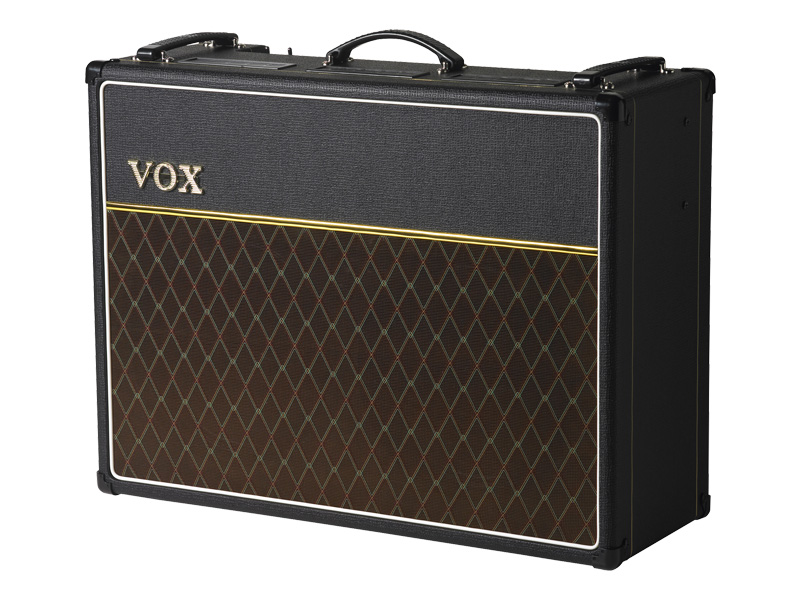
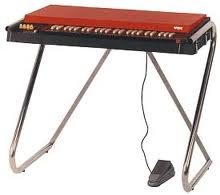
Later on, they used the Vox Continental organ on songs like I’m Down.
At the time of the February 9th, 1964 Ed Sullivan show, these are the guitars they played.
On Feb 9th we saw John’s natural finished 325 was now painted black. Paul had his newer model Hofner 500 with the pick-ups spread apart. George has a Country Gentleman. BTW George had two country Gentlemen at one time. One ended up being destroyed. Both of George’s Gentlemen had the mute with the mute switches. Years later Gretsch released The Country Classic which is virtually identical but is missing the mute and the mute switches. Most Beatles tribute groups insist on having the model with the mute even though they were probably never used by George.
The guitar pictured below was 1st seen on the second Ed Sullivan show from Miami. It was a gift to John Lennon from Rickenbacker. Rickenbacker later gave a 12 strings model 360-12 to George, and then a 350-12 and the 1996 model to John. They also gave a bass to Paul.
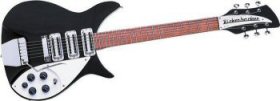
During the 1964 US tour, George used his new Rickenbacker 12 string. He even used this to play “Twist and Shout” and ” I Want to Hold Your Hand”. This was a bit strange but this saved him from switching guitars to play the next number “You Can’t Do That.”
By the time of the Shea Stadium gig in 1965, the only noticeable change was George playing a Gretsch Tennessean. The Tennessean was first seen on stage in December ’63 and at the London Palladium show on January 12th, 1964.
For more details consult Andy Babiuk’s great Beatles Gear book. ( see above)
Another instrument we saw on the 1965 Sullivan show was Paul’s Texan by Epiphone. In the Beatles film “A Hard Day’s Night”, we see the Ramirez classical guitar and in “Help” the 12 string Framus Hootenanny.
During 1966 Tours, the last year that The Beatles toured, we saw Both John and George playing Epiphone Casinos seen below. John George and Paul all bought Epiphones. Paul still uses his Epiphone Casino live on stage. Both Paul and George had Bigsby vibratos on theirs. John had the non-Bigsby tail-piece. Paul’s bass lost its pick-guard in 1966.
George was using his new Rickenbacker 360-12 with slighter softer looking horns and the “R” tailpiece.
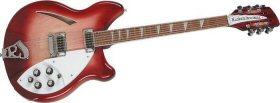

Other instruments The Beatles used on stage include the Gibson J160 acoustic with built-in pickup and control knobs. Both John and George had these and used them on stage from 62 to 65. Later we saw John with his painted with psychedelic colours.

Two more instruments that are rarely mentioned in any detail are John’s harmonicas. So little is known that I asked Mark Benson from “1964 the Tribute” what he used to achieve those authentic sounds.
For songs like “Please please me”, “Love me do”, “Chains”, “There’s a place”, and “From me to you”use a chromatic harmonica like the “Horner Chromonica” in the key of “C”. The Chromatic harmonica has a little push-in lever that switches the holes so that you can play all the sharps and flats.
In “I’m a loser” and “I should have known better” Lennon used a Marine Band type “diatonic” in the key of “C”. On “I’ll get you”, He uses a diatonic in the key of “G”.
Of course for a complete John Lennon look get yourself a Vox Python strap.
The Fender strap was the typical strap style used in the early ’60s.
After they stopped touring we only got to see the Beatles in rare videos.
We saw George with his ’65 Gibson SG in the Paperback Writer/Rain videos. He played the SG live at the NME Poll-Winners’ show on Sunday, May 1st, 1966. This was the final UK concert. They played only 5 songs. It was not filmed or recorded. Strangely George used the SG to play ” If I needed someone” yet his 12-string Rickenbacker was on stage.
In the Revolution video, we see George with a red ’57 Les Paul. This guitar had an interesting history. It was owned by John Sebastian of the “Lovin’ Spoonful”, and sold to Rick Derringer of “The McCoy’s” and Johnny Winter fame. It was originally a 1957 Gold-top. Eric Clapton bought it and then gave it to George.
John was later seen with his Casino looking like this after he sanded off all the paint.
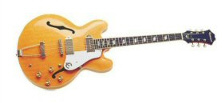
We also started seeing Paul use his Rickenbacker 4001 bass. Most tribute bands who do a Sergeant Pepper’s set use this type.
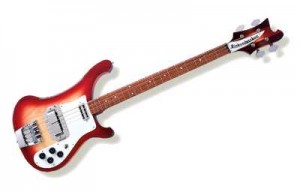
For the very last live performance on the Savile Row rooftop, Paul uses his Hofner bass with the pick-guard missing and George plays a Fender rosewood telecaster. The boys are using Fender amps. Paul’s Hofner pick-guard went AWOL during the 1966 tours.

Here we have both the original lake placid blue Fender Stratocaster and what it looked like after George painted it, as seen in the Magical Mystery Tour film. Both John and George owned lake placid Stratocasters. Paul was seen using a one-pick-up Fender Esquire in the studio during the Sgt. Pepper sessions. There are studio pictures of John with the Gretsch 6120. It has been said that he used that one on Paperback Writer.
When Paul recorded piano sometimes either John or George would play the bass. They used a Fender Bass VI which is a 6-string bass and is tuned like a guitar only with heavier gauge strings. You can see this in the Hey Jude video. Squire makes a more affordable replica.

Paul’s Bass and string gauge
Recently a Hofner tech that works on Paul’s equipment stated that Paul uses Hofner/Pyramid strings.
Model no. H1133B flat wounds
The gauges are: Gauges: .040 – .055 – .070 – .100
John Lennon’s Rickenbacker s
John 1st purchased what is now called a model 325 c58 in a natural finish. The model was known as the Capri. It had a Kauffman vibrato and Rogan knobs.
The Guitar was later painted black. It is rumoured to have been painted by an automobile shop. Burns knobs and a Bigsby B5 vibrato were installed. The Pickguard was gold-coloured. Lennon was also seen with Hofner tea-cup knobs. The Bigsby vibrato came with a Bigsby bow-tie bridge. By that time Lennon was using Burns knobs. This was the one seen on the 1st Sullivan show.
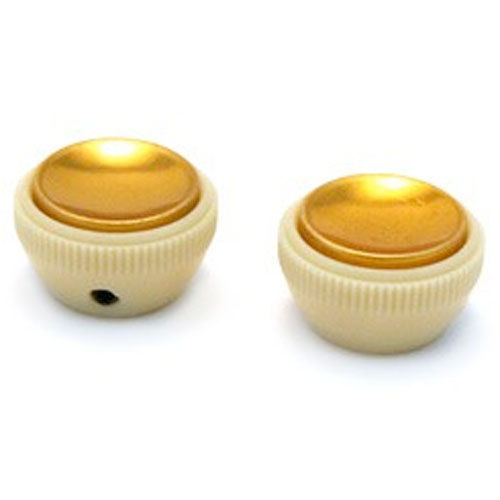
In 1964 Rickenbacker gave Lennon a black 325, a fire glow 1996 and a 350 twelve-string version. He was seen lip-syncing
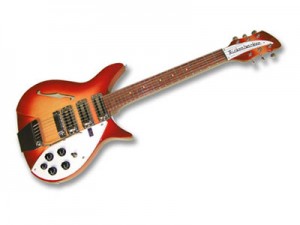
with the 12-string in Holland.
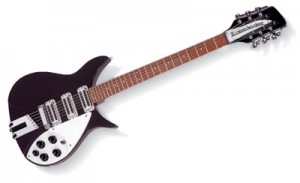
all these were 3/4 scale guitars. Rickenbacker later made a full-scale version named the 355 with the trapeze tail.
Over the years Rickenbacker made other copies and re-issues. The 350V63 with a trapeze tail, and The 320 had the R tail and had high-gain pick-ups.
The “1996”, is also a 3/4 size in Fireglo finish with an F-hole. There is a picture of Lennon standing backstage with this one. So he apparently did use it on stage.
Here are some of the different tailpieces and pick-ups.
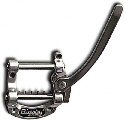
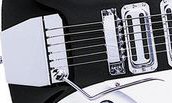

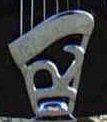
standard Toaster


George’s other guitars
George Harrison also used other guitars. Before the Beatles hit America, George had travelled there to visit his sister. He bought a single pick-up Rickenbacker. Later he added a second pick-up. He appeared lip-syncing on “Ready Steady Go” with this one. It was red when George purchased it. He then had it painted black to match John’s.
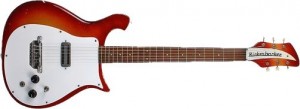
George was also seen with a Maton MS500. The one he used had the Bigsby vibrato and the bow tie bridge. He was seen with the Maton onstage in July and August 1963. You can see him on stage in some rare photos. George borrowed this guitar while his regular guitar was in the shop. He never owned this guitar. It sold in September 2018 for $453,510 us dollars.
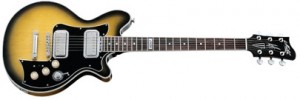
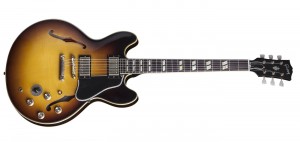
In late 1965 George was seen using a Gibson ES-345TD. We see him in some videos and He used it on the last UK tour in late ’65.
Equipping a Tribute band that performs all the Beatles eras does cost a fortune. Sometimes it is wise to start small and if you are good, the gigs will come in and so will the money.
It can look strange to see a Sergeant Pepper set with George playing a Gretsch and John a Rickenbacker, yet there are many tribute bands that have no choice.
Beatles instruments on a budget
First, we look at the authorized low-cost copies. Some are no longer produced but may still be found.
Hofner makes the Ignition series. Epiphone made a copy of the J160, named the EJ-160. the Gretsch Electromatics line can sub for George’s guitars.
Gretsch has a new set of budget Electromatics that look a bit closer to the originals. The prices are steep but less than the originals.
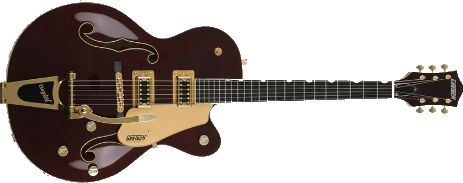
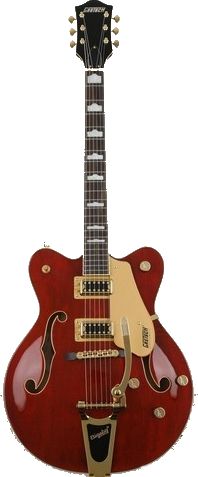
Fender makes Squire line and there are tonnes of Fender look-alike knock-offs.
Epiphone makes a less expensive Casino.
Rickenbacker made or still does the 330-12 which looks a lot like the 360-12, while still expensive, does sell used for a lot less. There are slight differences. The neck on the 330 goes deeper into the body so that the neck pick-up is further from the edge of the body. The neck has dot inlays instead of triangle-shaped inlays. There is no white binding running along the edge. The pick-ups are the high gain types and not the toasters. It has come to my attention that Rickenbacker made a 360-12 that was more like the 330-12 than not. The ones that I have seen were made in 1980. They are basically 330’s with bindings and triangular inlays. The neck was set like the 330, the pick-ups were the high gain. The tailpiece was the “R” type. So without question a modified 330 was sold as a 360.
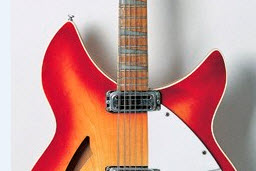
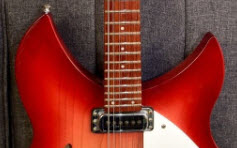
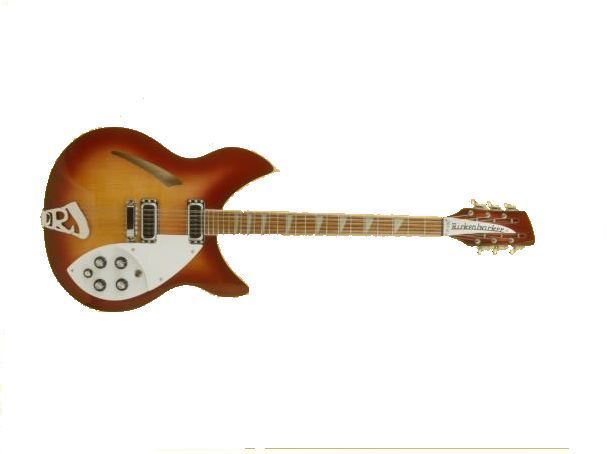
The 360s have toaster pick-ups. The tail-piece is the “R” type as seen on the later model 360s.

Vox makes lower-cost hybrid amps that could sub for AC15 and or AC-30’s
One amp that may still be found is the VOX Cambridge 30. These amps are known for a problem with the optocoupler. It is recommended to change the LT9914 to a VTC5L3 and also to change the original TDA2050 chip with an LM3875. Info on how to do this is available on the web.
Vox replaced this with the AC30VR. These hybrid amps use a single tube in either the preamp section or in the power section. This makes for a much lighter amp.
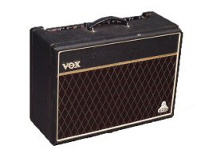
I must admit, I haven’t heard these live. The demos on YouTube sound pretty well. I’m sure they are fine for a Beatles tribute.
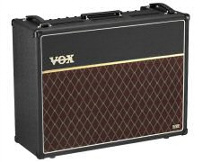

“1964 The Tribute”, one of the best and longest-running Beatles Tribute bands uses the old Vox “Tone lab” amp simulator along with lightweight dummy amps to save on high airline baggage charges. Judging by their live sound, they work well. The tone lab has a 12ax7 tube in it so you do get a tube sound. There are some that say the tube is there only for show. I have one and the tube makes a difference. I recently replaced the 12AX7 with a Chinese 6N4. I could not believe the difference. The sound is much cleaner. There are still websites that have tone patches that you can load. Look for .tlp files. All you need is a MIDI cable and a MIDI to USB adapter and the Tone lab software.
1964 the tribute had also built modified Vox AC30’s that weighed about 40 lbs. The current AC30 weighs in at about 73 lbs.
I have a suggestion. Buy or clone a Vox ac30 case but use a new Vox MV50 as the power amp.
Here are plans and instructions for building your own AC30
Source: DIY Amplifier: AC30 – Nachbau eines Gitarrenverstärkers
Get the grey Tolex and it would look great.
Here is another article on AC30 builds.
Hoffman Amplifiers Tube Amp Forum, my first build – Vox AC30
Source: my first build – Vox AC30
Vox also makes a VT series but in someone’s infinite wisdom the grills are either made of metal or black cloth. I have a VT40+ which I have used to jam, I have yet to gig with it. It has a black grill cloth. There is a fellow that wrote a nice article on how to change either the metal or black grill cloths and replace them with the traditional grill cloths.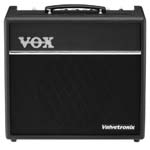
Vox VT-40+
The original article showing how to replace the grill cloth, has disappeared.
Here’s an article on changing an AD30VT grill cloth
Here is a variation on that article. Vox type grill cloth can be found on eBay by Chinese sellers.

“Okay, I know this isn’t a vintage keyboard. But who would want an ugly, modern-looking amp with all those great vintage keys? I love my Vox AD100VT amp. It’s got the reliability of mod…”
Source: (Giving an AD100VT a vintage look)
Vox may still make the VT120+ That could look a lot like an AC30 if you change the grill cloth.
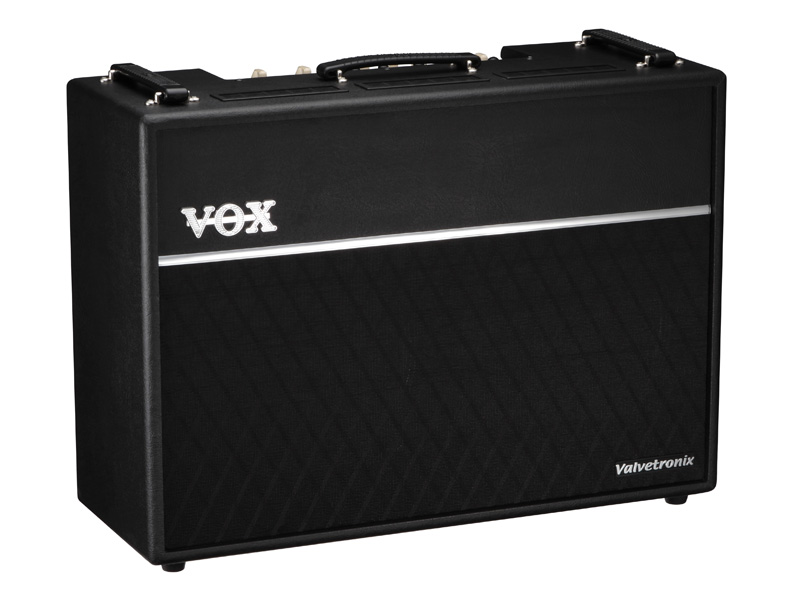
I recently found a Cambridge 30 and plan to change the grill cloth.
I stumbled across this excellent site on Beatles guitars. Do yourselves a great service and check it out.
I have always been fascinated by John Lennon, The Beatles and the guitars they played that changed musical history forever, for those of us who were there. I gathered these pictures and description…
Source: The Beatles and Beyond – John’s Guitars
It appears that VOX doesn’t want to cut into their sales on the AC15’s and AC30’s so they make these models look different. Now black is cool but it’s not the Beatles.
The knock-off Instruments.
There are other instruments that can pass for Beatles instruments if you have budget constraints.
Jay Turser makes or has made a few reasonable facsimiles.
The Eastwood Classic 6 looks more like the Gretsch 6122. Harley Benton is marketing a Rosewood telecaster at a very friendly price.
There are lots of Hofner clones out there but one has to wonder if there are not all the same. Check out the tailpieces.
Tanglewood, Vintage and Tokai have made J160 copies. Original Gibson’s sell for between $2000 to $2500 US.
Beatles’ AMPS
These are the amps they used after they signed a recording contract and the subsequent touring years.
From the early days in 1962, they were using AC-15 then AC-30’s.
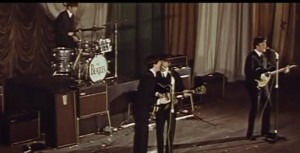
Paul Eventually got a T-60. Most Tribute bands stop here.
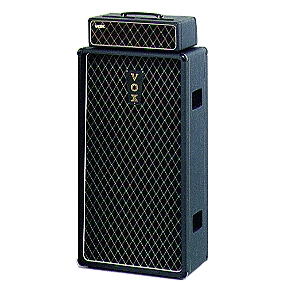

By the time the Beatles came to America, they were using AC-50’s. The AC50 used a separate head with an AC-30 style speaker cabinet. It looks like Paul was also using an AC-50 head on the T-60 speaker.
Here is another look.
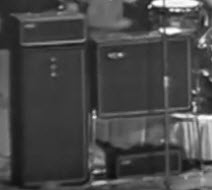
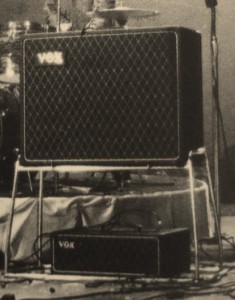
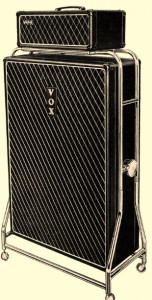
Paul was soon using a T100 cabinet with an AC100 Head. John and Paul were also using AC100’s.
The “Super Beatle” appeared later in 1966 with a head that was the same width as the speakers with angled sides. These made amps by Thomas Organ in the USA and were solid state. Way back in the ’60s and 70’s solid-state amps were pretty bad. If you are thinking about buying one, try it out first.
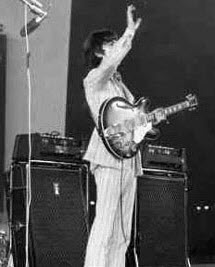
It appears that the Beatles reversed the heads as all the control knobs were on the backside. This picture is from 1966.
The Beatles played their last live performance on 30 January 1969 on the roof of their building at 3 Savile Row in London.
John and George used silver-faced Fender twins and Paul used a silver-faced Bassman amp.

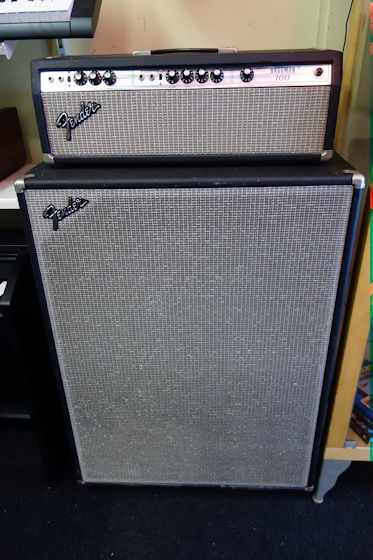
If you are even In London, 3 Savile Row is near the corner of Savile Row and Vigo street, 1 street west of Regent Street.
“1964 The Tribute” has amassed lots of Beatle instruments over their long career. They added this page to show them off.
Although I do not condone it, the Chinese are making authentic-looking counterfeits of most of the common Beatles instruments. Hofner, Rickenbacker, Gibson, and Gretsch fakes can all be found at extremely low prices. Beware, some people may try to sell you a fake at a real price.
Check out my Fackenbacker page where you can find info on Beatle guitar copies going back to the early ’80s and current offerings.
Check out the new page dedicated to the various microphones that the Beatles used both in-studio and on stage.
For more information on the Beatles and their guitars visit this great site. Til Only Silence remains

Cara Carlson Dot Com
Source: tilonlysilenceremains – Cara Carlson Dot Com
We also have a YouTube channel.


